Top 5 Tips to Prevent Costly Mistakes with Your Water Quality Sonde
(Updated October 2021)
Having a problem with your water quality sonde? OK, so you call your manufacturer and you work with them to start troubleshooting your issues, and hopefully, the two of you can resolve the problem, quickly and easily.
But, what about other options, are there any? Yes, you could read this blog post put together by our experts!
We have worked with our product managers, sales team, and technical support specialists, to identify the top 5 most costly mistakes made with water quality sondes.
Mistake #1 - Calibration Issues
Frankly, calibration is the trickiest part of using sondes for the vast majority of people, and it’s also the most critical for collecting quality data.
 There are so many detailed nuances to each step of a calibration that can be easily overlooked by a novice user, not to mention that some sensors require you to prepare your own standards used for calibration and that can cause a whole host of other issues.
There are so many detailed nuances to each step of a calibration that can be easily overlooked by a novice user, not to mention that some sensors require you to prepare your own standards used for calibration and that can cause a whole host of other issues.
So let’s narrow the scope of the discussion to some of the mistakes we see most often.
a. Using Expired Standards - calibration standards have an expiration date...and each bottle of standard is labeled with this information. (Learn more, YSI Calibration Solutions and Buffers Expiration Times).
As soon as a standard is manufactured, it has a lifespan – this is typically 2 years for pH standards for example, but will vary from standard to standard due to the varying chemical compositions. However, once opened, that lifespan shrinks significantly. So for the pH example, once opened it will last approximately 6 months.
To put this in practical terms – expired standards are kind of like expired milk. Yes, you can probably drink some that is a few days old, but should you take the risk? After you pass the expiration date, you’re adding a layer of uncertainty into the accuracy of your data. In a multi-point calibration, even using one expired standard can affect the calibration, since calibration points often build off one another behind the scenes.
If you are using sondes infrequently throughout the year, it is worth writing the open date on the bottle so you can keep track of when it will expire to avoid any potential confusion.
b. Unclean Equipment
So while we’re on the topic of contamination, the next thought that comes to mind is the cleanliness of the equipment we’re calibrating. It’s one of the biggest calibration errors we see with turbidity probes specifically. It’s not uncommon for our technical support team to get calls asking about negative values for turbidity. There must be something wrong with this probe – it’s reading negative numbers. Well in most cases, this ties back to calibration.
Zero point calibrations for optical sensors, but turbidity in particular, are susceptible to contamination during calibration. If there’s any residual dust, grime, biofouling left on the probes, sonde bulkhead, or sensor guard (Basically anything that will be in contact with the standard), then essentially we’re calibrating our 0 NTU cal point using a 1 or 2 NTU standard. In some cases, this difference may be so small that it will not matter. In environments like drinking water reservoirs, where there are very low turbidity levels – improper cleaning will manifest itself in the field when you see something like a -1 to -3 NTU turbidity reading.
So what’s the lesson here?
Thoroughly clean all of your equipment before you calibrate and when you think you’ve cleaned it well enough, clean it some more. If you’re working in these low turbidity environments, it also may be handy to have a second sensor guard available that you use just for calibrations because it takes one source of potential contamination off the table. The main point here is: Don’t let something as simple as cleaning impact the integrity of your data.
c. Taking Shortcuts
The simple truth is that just about everyone reading this has a to-do list a mile long. It’s the new normal these days. So it shouldn’t be a surprise that we’re all looking for shortcuts in just about everything in life. Calibration, however, is not the time to cut corners.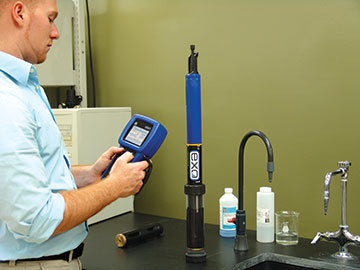
In a standard calibration process, our equipment manuals always recommend rinsing the calibration cup, sensor guard, and probes with your next standard at least twice prior to performing a calibration. Some groups’ standard operating procedures (SOP) may even be more thorough, so be sure to follow your own organization’s rinsing policy. Ultimately, the rinsing process ensures that there are no remnants of any previous standards left on the equipment before moving on to the next point in a multi-point calibration or the next sensor that needs calibrated.
To give a practical example here: Let’s say you need to calibrate a Turbidity probe and a pH probe for a day of sampling. After you’ve successfully calibrated the Turbidity probe with NTU standards, it’s important to rinse the calibration cup with your first pH buffer at least twice before proceeding with a pH calibration. This ensures that none of that Turbidity standard is left to contaminate your next cal.
d. Choosing the Right Calibration Points and Standards. This is another common area where users can struggle.
With conductivity probes for example – If you’re monitoring in freshwater you want to use a 1000 micro-siemen standard, in brackish water a 10000 micro-siemen standard, and in seawater a 50000 micro-siemen standard. Calibrating with the proper standard tunes the probe to be more accurate at those ranges. Also, one quick note on conductivity standards – even if your monitoring site runs far lower than 1000 micro-siemens, always calibrate with a 1000 standard. Anything else is susceptible to contamination.
…But what about when you’re starting to monitor a new field site? Sure, it’s easy to decide whether or not I’m monitoring fresh water, salt water or somewhere in between and make a decision on a conductivity standard, but what something less obvious like pH or turbidity?
Our advice, if you’re unsure about the environment you’re going to be measuring, always calibrate to the full range of the probe. If we’re talking about pH – perform a 3-point calibration at pH 7, 10, and 4. If we’re talking about turbidity – perform a 3-point calibration at 0, 124, and 1010 FNU. This way the probe is ready to provide the highest quality data for whatever happens in the field.
Recap
Let's summarize what you just read:
- Don’t use expired standards
- Read the standards labels carefully
- Make sure to clean your equipment thoroughly before calibrating
- Avoid taking shortcuts in calibration like skimping on rinsing
- …And if you’re not sure which standards and calibration points to use, try to get a better read on your monitoring location – if all else fails, calibrate over the full range of the sensor
(Learn more, YSI University | EXO).
Mistake #2 - Incorrect Setup (Continuous Monitoring)
Last year, we surveyed sonde users across the globe, posing the question: “What is your greatest challenge as a monitoring organization?” The top response was data loss.
A few check boxes can really make a big difference. Setting up a sonde incorrectly can lead to a host of problems, including lost data or incomplete data records. This is a monitoring organization’s worst enemy because there’s no way to rewind time to know what happened at your site.
With water quality monitoring technology like EXO, we’ve streamlined the number of settings required to get your equipment up and running. Eliminating the potential for errors during instrument setup was a key point of emphasis for us. With other sondes, however, there are numerous options and menus for determining how an instrument collects data in the field. Setup is often complicated and navigating your way through the software can be tricky. Let’s go through a few hurdles in the setup process to help you avoid problems with your deployment.
Incorrect Deployment Settings
When you’re preparing a sonde for a long term deployment out in the field, there is an entire section of the software package dedicated to this application. For continuous monitoring, you’re typically setting up a sonde system to connect up to a data logger or data collection platform, and the sonde has to communicate and transfer the data it collects up to the data logger via SDI-12 protocols.
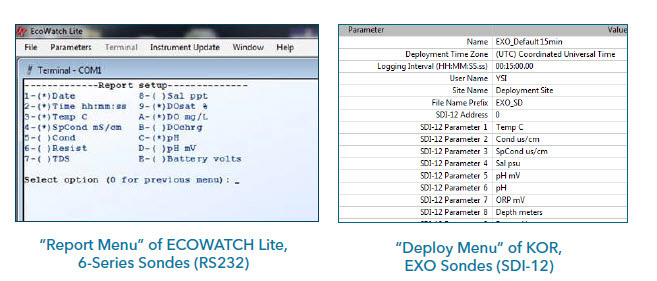
This handoff of information between the two pieces of equipment is where problems can happen.
A common mistake people make is data logger configuration. Be sure the parameters you set to log on your sonde match up with those to be received by the data logger program. Even the order is important here.
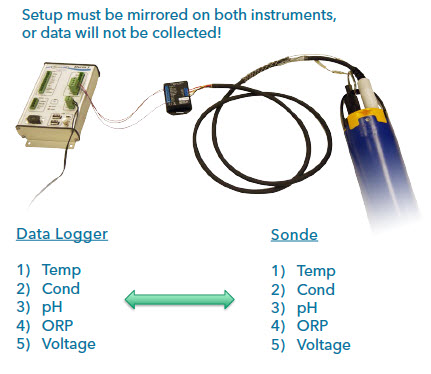
To ensure that data will always be collected, YSI recommends using redundant logging in the sonde as well as the advanced deployment setting, Sample and Hold. With internal logging and Sample and Hold turned on the sonde, a copy of the data is saved onto the sonde’s internal memory, and an additional copy is sent up to the data logger. You can turn on this feature on a 6-Series sonde by navigating to the Advanced>Setup menu and activating it. On EXO, this is in the Advanced tab of the Deployment Setup. This can at least give some peace of mind should you run into any issues with the rest of your monitoring setup, that you still have the data you need.
Choosing an Inappropriate Sampling Interval
When you’re not attaching a sonde up to a data logger as just discussed, premature battery depletion can also result in data loss. Most sondes will estimate a deployment time based on the remaining battery voltage. As a point of reference, EXO sondes will log data for up to 90 days at a 15 minute sampling interval in water temperatures around 25ºC.
Battery life should be an important consideration when choosing a sampling interval. When a sampling interval is shorter than 2 minutes, it’s possible that a sondes’ wipers won’t have adequate time to wipe the sensor surfaces to clear them from biofouling or sediment. In these high temporal resolution applications, a manual wipe command may be needed to activate wiping.
A 10 or 15 minute sampling interval is common for long-term baseline monitoring and will work in 80% of the long-term, or unattended, monitoring applications.
Incorrect Start Time
Once you’re ready to go and you’ve finalized your sonde’s deployment settings, the software prompts you to choose when the equipment should start collecting data. This is the last step in the process and is also one of the easiest to mess up. One typo here and all the work up to this point in calibrating and preparing your sonde for the field was for nothing.
People take advantage of the ability to enter a custom start time for their sonde deployments. It allows them to prep the sonde in advance of a site visit and there’s a convenience factor to it. The problem is, with one 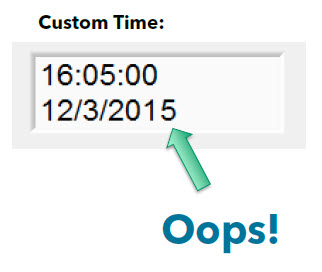 keystroke December 3rd, 2014 can easily turn into a start time of December 3rd, 2015 and then the sonde never starts logging data. Two months later when you collect the instrument from the field, and there’s nothing there, all because of something so simple. This problem can also crop up with custom deployment times if your sonde clock isn’t set to the correct time as well.
keystroke December 3rd, 2014 can easily turn into a start time of December 3rd, 2015 and then the sonde never starts logging data. Two months later when you collect the instrument from the field, and there’s nothing there, all because of something so simple. This problem can also crop up with custom deployment times if your sonde clock isn’t set to the correct time as well.
To avoid these mistakes, and to have some peace of mind that your equipment is in good, working condition – tell your sonde to “Start Now” or “Start at the Next Interval” , and deploy it in your lab or office overnight. Just place it in an aerated bucket, nothing special and check it the next day. Not only are you making sure you’ve set the instrument up correctly, but you’re collecting QA data for the upcoming deployment which you can use to check for sensor drift in your data later down the road.
After your mock deployment in the office, if you’re satisfied that the sonde is good to go, head out to the field site. The sonde will continue collecting data along the way, but when looking at the data you’ll always know when the sonde hits the water because your conductivity readings will be dramatically different in air than in water.
Recap
Let's summarize what you just read:
- If you’re setting up a sonde for long term deployment or continuous monitoring – check that your sampling interval and battery life are adequate for your monitoring goal.
- If you’re connecting the sonde to a data logger, be sure to setup the RS232/SDI-12 settings in the software and that those settings match those of the data logger device.
- Be careful when choosing a start time for a deployment, because one typo can lead to an incomplete data set.
Mistake #3 - Hardware Issues
As most water quality professionals will tell you – long term deployments with sondes will inevitably result in some sort of unexpected issue in the field. The reality is even the best-laid plans can go astray with field work and this is especially the case in the harsh monitoring conditions that mother nature has in store for us.
It’s our job to limit the risk to our equipment, our data, and our budgets each year.
Several common mistakes can be made that may result in issues with your sonde’s hardware. Here are some, with ways you can avoid making them.
Lack of a Maintenance Schedule
First and foremost, a typical water quality sonde has around a 5+ year operational lifespan when used in more extreme conditions, longer when used less frequently, or in less extreme conditions. This of course does not include some of the chemical and membrane-based sensor technologies which should be replaced on a more regular basis (pH probes or replaceable tips, for example)…however these figures are based on the assumption that regular maintenance is performed to keep equipment in good shape. A big mistake people often make is underestimating the need for a routine maintenance regimen and this can have a significant impact on how long the sondes will hold up in the field.
For example…water ingress. It’s is one of the most common failure modes for monitoring equipment throughout its lifetime, and to prevent future leak paths into your sonde, it is critical to periodically check all the O-rings and inspect all the sealing surfaces on your instrumentation. This includes taking a close look at the battery compartment, connector, and cable O-rings on most sondes; and on EXO sondes, just the battery compartment O-rings since the connectors and cables are wet-mateable.
O-rings can fail when they’re not properly maintained, and this is why we engineered EXO with redundant O-ring seals. If you are replacing O-rings to maintain your system, here are some mistakes to avoid: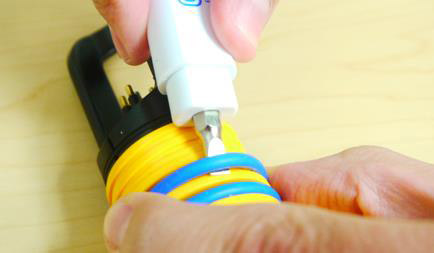
- Don’t use sharp tools to remove or install O-rings! You may unintentionally do more harm than good to your sonde by cutting the O-ring you’re examining or installing.
- Don’t lay O-rings down on a work bench, table, etc. There is a chance they will grab onto residual dirt, dust, or even a strand of hair that could cause a leak path.
- Don’t forget to lubricate the O-rings. The material needs to stay hydrated or over time it will crack. Over-lubricating the o-rings does NOT make them 'more' water resistant.
There are plenty of other aspects of a routine maintenance regime that you should review to avoid some costly problems down the road, so we recommend taking some time to review the portion of the operations manual dedicated to this topic.
No Spares
We just talked about one incident that we can prevent…leaks through poor O-ring seals and there are several other preventative measures in the equipment manual we should all take to keep our equipment running. However, unfortunately, floods still happen. Lightning still happens. Vandalism still happens.
No matter how well we maintain and setup our equipment there is always a risk that something is going to go wrong that’s outside of our control. This is just the reality of monitoring water quality continuously with sondes. It is what it is.
One nightmare scenario you can imagine is losing the equipment you’re relying on to collect data… and waiting days or weeks on a repair or replacement to arrive, presents a big problem. As previously mentioned – you can’t rewind time to collect all that data you’ve lost.
And for that reason, we always recommend for monitoring projects that you keep a spare sonde and sensors available. Not only can you use the spare to fill in for a damaged or lost instrument, but it also can allow you to take a sonde out of circulation for a few days to perform the routine maintenance we discussed earlier without impacting your work.
Lack of Budgeting
All of these suggestions are easy for us to say as the equipment manufacturer, but the reality is that budgets are tight. A lot of monitoring equipment is purchased with one-time grant money and after that, as an organization, you’re on your own. The fact is that operational expenses are going to stack up over the course of a monitoring season. Calibration standards, replacement membranes, spare probes…they’re all necessary to maintain a monitoring program over time.
It’s challenging to find the money for these things in a yearly budget, but it’s also equally as important to find the money for these types of operating expenses as it is to buy the equipment in the first place. We always encourage groups to think about this before they decide to purchase sondes. You never want to max out your budget to purchase equipment. As a rule of thumb, always save 20% of whatever you had planned to spend on the spares, accessories, and consumables that will keep it running once any funding goes away.
Recap
Let's summarize what you just read:
- Make sure your equipment is receiving regular preventative maintenance to extend its operational
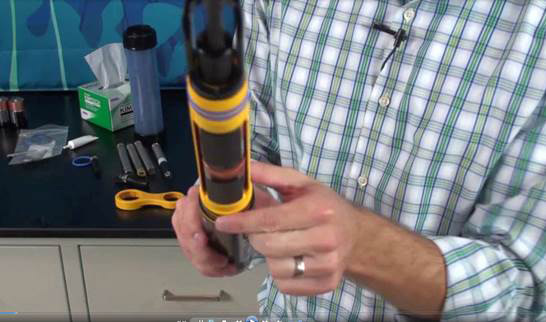 lifespan.
lifespan.
- Be prepared with spare hardware (sonde, sensors, handhelds) ready to go in case of an emergency.
- Maintaining equipment is equally or more important than buying it in the first place. While it can be challenging to find money for these expenses, do your best to budget for spares, accessories, and consumables that keep your equipment in good working order.
Mistake #4 - Improper Handling & Storage
Often times when sondes aren’t being used, it’s out of sight, out of mind. Throughout the monitoring season when the equipment is being used on a daily or weekly basis, people consciously take all the right steps to keep their equipment in good shape. But when the monitoring season or a big project ends, often times the sondes and sensors can be stored improperly during off seasons and that can lead to unexpected results when you are ready to start using them again.
Improper pH Probe Storage
The number one way to destroy a pH probe (or ISE probes in general) is to store it in DI water. This is a pretty common occurrence when we’re talking about problems that arise with long term storage. DI water is very prevalent in most lab settings and often times it’s even used as a part of the rinse step in some organizations’ calibration processes. So it is easy to make the mistake of storing your probes in it.
The problem is that when exposed to DI water for long periods of time, the reference standard inside a pH probe will become diluted, as all the hydrogen ions slowly rush across the concentration gradient formed from the De-ionized water. What we’re left with over time is a pH probe that is less responsive and has a significantly reduced lifespan.

Another mistake with pH probes is they are allowed to dry out – either in storage, or out in the field. pH is still one of the few parameters that is still based on electrochemical technology, and that means the probes must continue to stay in a hydrated environment at all times. Without wet storage, the reference wick dries out and will create erratic readings or slow response once the probe is used again in the field.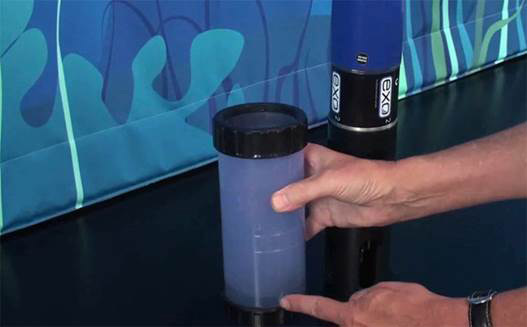
Now for either of these two problems, the simple solution is to store pH (and other ISE) probes according to the directions in your operations manual. For short term storage, or anything under a few weeks between uses, a humid environment is perfectly fine. Just put a small amount of tap water into your calibration/storage cup and you’re good to go. But for long term storage, prevent any damage to the pH probe by storing it in the solution it is shipped in, or if that’s unavailable, pH 4 buffer. The logic behind this is that these buffers closely resemble the KCL solution that is inside the probe.
Storage with Batteries
The other minor mistake that our technical support team sees fairly regularly is people forgetting to remove alkaline batteries from the equipment during long periods of storage. Over time alkaline batteries can leak acid into the battery compartment if not used for long stretches of time. This is the same for just about every electronic device. I’m sure that everyone has experienced this in some form or another.
The problem is that the acid from batteries damaging a consumer electronics device like an MP3 player or a portable video game player costs you a couple hundred dollars to replace. The same damage on a sonde’s battery compartment will cost much more and will result in a trip to a repair center, which may impact your 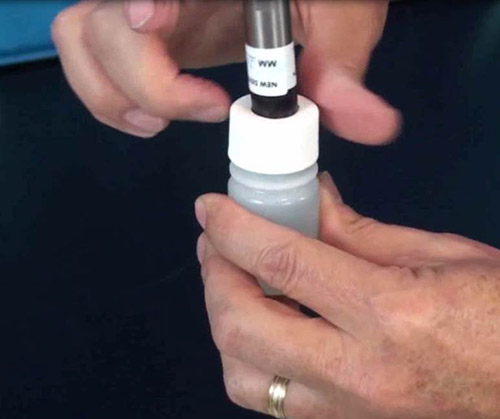 work schedule.
work schedule.
Recap
Let's summarize what you just read:
- Ion-Selective Electrode based sensors should never be stored in DI water, or they will lose their potency as their internal reagents leech out into the water.
- Don’t allow pH sensors to go dry.
- Always remove batteries from sondes for storage periods longer than a month to prevent potential battery acid leakage.
- Even though sondes are tough by nature, don’t leave thousands of dollars of equipment up to chance.
Mistake #5 - Falling Behind in Monitoring Trends & Activities
Last and certainly not least, the final problem that we see with sondes is that groups have a difficult time keeping up with new monitoring trends. Every year research is being done across the globe on how to best measure certain parameters and how to glean additional information from the same data sets. It’s enough to make your head spin. The pace of it all is almost overwhelming, but it’s certainly exciting to see the progression of the monitoring community.
Underestimating Capabilities
All sorts of research are occurring these days, not only on new sensors but on surrogate measurements. 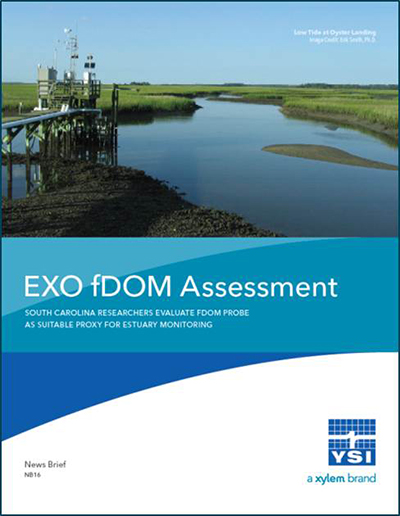 Meaning how to use data we have from standard sensors like conductivity, temperature, pH, or even fDOM to calculate another parameter. fDOM readings, for example, have been recently used as surrogate measurements for mercury and even dissolved organic carbon. There is some really interesting work being done with EXO sensors. (Download the fDOM Case Study).
Meaning how to use data we have from standard sensors like conductivity, temperature, pH, or even fDOM to calculate another parameter. fDOM readings, for example, have been recently used as surrogate measurements for mercury and even dissolved organic carbon. There is some really interesting work being done with EXO sensors. (Download the fDOM Case Study).
These types of surrogates are truly the future of monitoring as we only need a few select sensors to build a foundation of data points, from where we can make seemingly limitless conclusions. Researchers are continually building these relationships based on comparisons between grab samples and continuous monitors out in the field, so it’s important to keep up to date with new discoveries each year.
It’s always a good idea to check out industry journals like NALMS Lakeline or USGS publications, and webinars are a great tool too. (View YSI's list of on-demand webinars). The National Water Quality Monitoring Council held a webinar on the state of nutrient monitoring and the EPA held a 2-hour digital event on the future of water quality monitoring. Both were well worth the time invested. Subscribing to YSI's blog or downloading Mission: Water magazine are other great ways to keep up to date on applications from researchers and scientists.
In addition to making sure to keep up with the new research coming out from our colleagues around the globe, it’s also important to familiarize ourselves with the monitoring technologies that are at our fingertips. Our recommendation is that if you’ve purchased monitoring equipment, train yourself on what it can do for your organization and use it to its fullest potential. You may be surprised at what you can achieve with the resources you already have in your back pocket.
Recap
Let's summarize what you just read:
- There are many moving targets with monitoring water quality and best practices are always evolving and new monitoring trends always emerging
- Keep up with the latest publications and monitoring applications
- Connect with YSI on our social media channels to learn more about how our equipment is used across the globe.
- Continue to educate yourself on new technologies and brush up on the capabilities of equipment that you already have in your monitoring arsenal
Continue your education now, by checking out EXO University, for on-demand water quality sonde training or download the SmartQC Handbook.

Additional Blog Posts of Interest
How to Overcome 5 Water Quality Monitoring Challenges
7 Tips to Fight Fouling and Extend Water Quality Sonde Deployments
How to Take Care of Your New EXO Sonde
Get Your Water Quality Sonde Ready for the Season